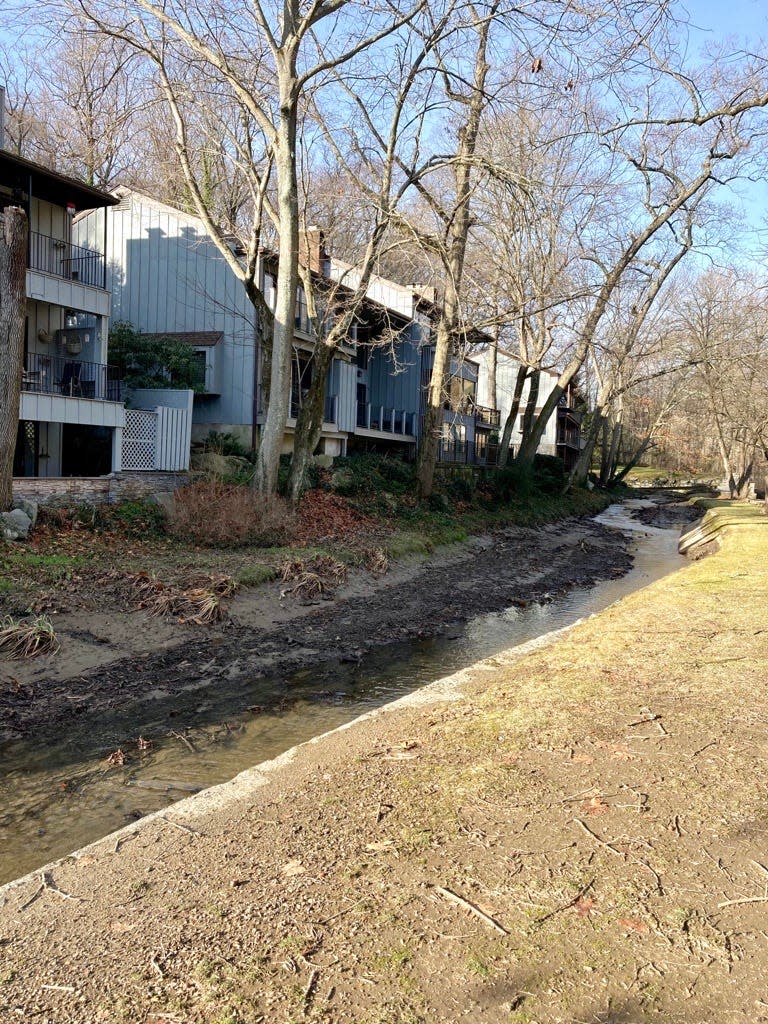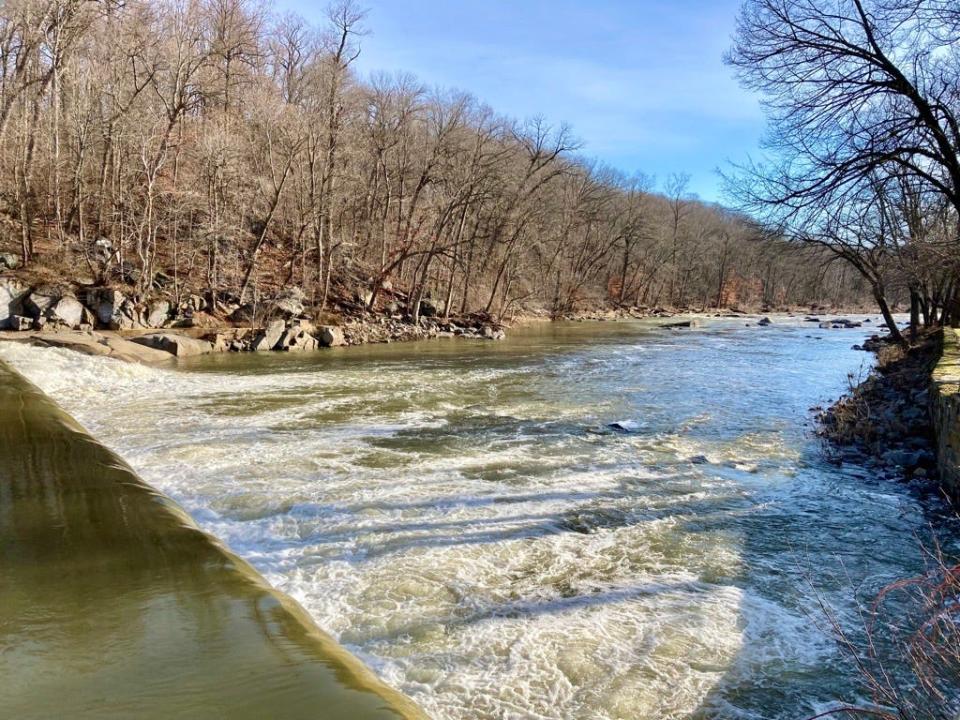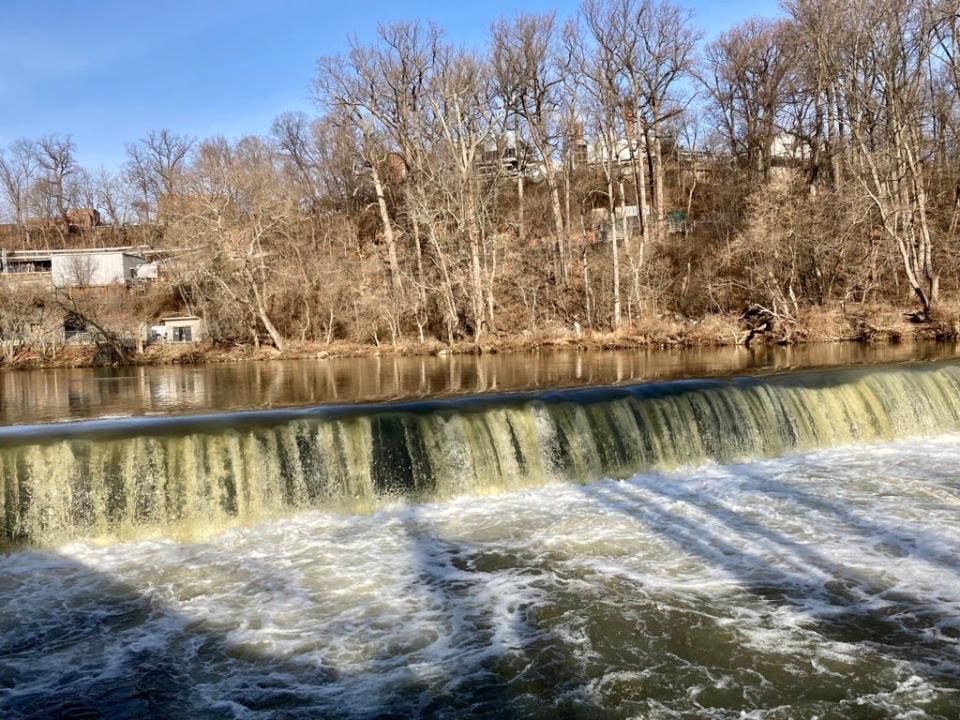They can't see it, so why does DuPont's dam removal plans worry residents of gated community?
A week after rain and snowstorms soaked already saturated ground causing stream and river flooding, a resolution to grant an easement for the removal of a dam on the Brandywine River in Wilmington will be considered by the city council Public Works & Transportation Committee. This follows the postponement of a vote on the measure last month by city council member Zanthia Oliver, who wanted to give the community more time to familiarize themselves with the issue.
The river, called Brandywine Creek, originates 30 miles north in Honeybrook, Pennsylvania. The waters run through Wilmington and empty into the Delaware River. It was dammed at several points over the past 150 to 200 years to support early American industrial and commercial activities. There are six dams on the river within Wilmington. The DuPont company owns Dam 6 located next to the Dupont Experimental Station.
In 2021, tropical storm Ida caused the Brandywine to crest over 21 feet, 4 feet higher than previous records, resulting in the city's largest flood in 200 years. DuPont Experimental Station and Dam 6 suffered extensive damage from the deluge. The company has plans to dismantle the dam.
The ordinance, sponsored by Oliver, would permit construction workers to stage equipment on city property so they can work on the dam removal project.
However, at the Dec. 14 city council meeting, Oliver announced that she was postponing the resolution after receiving "100s of emails and phone calls." Several residents and supporters of the Brandywine Falls residential community attended the meeting to voice their opposition to the ordinance.
Why residents oppose the removal of Dupont-owned dam
Brandywine Falls HOA treasurer Frank Ursomarso Sr. said instead of removing the dam, the community would "rather have it repaired or partially removed." The upscale residences are located along the banks of the Brandywine slightly downstream from DuPont Experimental Station. Dam 6 is not visible from the Brandywine Falls neighborhood. Another dam — Dam 5 — adds to the visual appeal and charm of the neighborhood.
Yet, according to Ursomarso, the community is concerned that Dupont's decision to remove Dam 6 would impose negatively on the neighborhood. Many properties in Brandywine Falls back up to a colonial-era mill race. European settlers built the mill race to channel the force of water into power for their commercial activities. Ursomarso said without the dams, "historical significance" would be lost, recreational activities would be limited, and the mill race would dry up, leading to decreased property values.

"It's part of our culture. It's part of our history," Ursomarso said, "We like the beauty of the dams. We like the sound of the water. We like the recreational capacity of the dams for swimming, for fishing, for kayaking," Ursomarso said.
While Brandywine Falls residents appreciate the results of damming the river, University of Delaware professor Gerald Kauffman said the bigger picture is looking at the Brandywine as a river system. He said dams located upstream can affect neighborhoods downstream. Kauffman is a member of a team of researchers investigating flooding of the Brandywine Watershed in Pennsylvania and Delaware.
With the increase in severe weather events due to climate change, local flooding is anticipated to become even more frequent. Wilmington, specifically the northeast section of the city, lies at the end of Brandywine Creek and is particularly vulnerable.
Ursomarso said he and his neighbors are sympathetic to the flooding concerns of residents in Wilmington's Southbridge and northeast area but insisted that high water levels, rather than dams, are the primary cause of the flooding. He said they also haven't been provided any evidence demonstrating how removing dams would help alleviate the flooding, but they are willing to consider research on the matter.

The Brandywine Flood Study is expected to conclude in summer 2024. The report will make recommendations for flood mitigation, which may include dam removal and habitat restoration. As research on the watershed continues, Kauffman said that disassembling the crumbling Dam 6 would decrease the risk of a breakdown of Dam 5. Preparations for an evaluation of Dam 5 are in progress.
DNREC requests federal study of other dams on the Brandywine
The U.S. Army Corps of Engineers confirmed that it is seeking approvals for an agreement with the Delaware Department of Natural Resources and Environmental Control to conduct a feasibility study for the ecological rehabilitation of the river system. The federally funded examination would investigate the impact of the removal of Dam 5 and Dams 7 through 10 along with the potential implementation of fish ladders.
The fish ladders are being considered to restore the migration of American shad — a fish that swam in abundance in the river before European settlement of the area and the damming of the river. The dams block the fish from swimming upstream to their spawning grounds.
"We’d consider the benefits, costs and impacts of a variety of alternatives, including no action, full removal of [a] dam, partial/limited removal, creating a fish passage bypass via technical fishway, or barrier transformation such as nature-like fishway (e.g. rock ramp)," said U.S. Army Corps of Engineers Public Affairs Officer Steve Rochette in a statement.

Ursomarso said that as homeowners who enjoy life on the river, Brandywine Falls residents are not opposed to a fish ladder going around Dam 5, "but we want to keep the dam up and we want to keep the gate up that runs water into our mill race."
It could take the U.S. Army Corps of Engineers around two years to complete a draft report, Rochette said. Throughout the study, there will be chances for public input, including public meetings and formal comment periods. Recommendations in the study findings would not be binding. Final decisions will be made at the state level. However, the Corps of Engineers added that "certain activities" may be subject to federal regulatory approval.
The city council's resolution to allow access to city property for Dam 6's removal will be discussed at the Public Works & Transportation Committee meeting at 5 p.m. on Jan. 17.
Contact reporter Anitra Johnson at ajohnson@delawareonline.com. Join her on the Facebook group Delaware Voices Uplifted. Support her work and become a subscriber.
This article originally appeared on Delaware News Journal: DuPont's plan to remove Dam 6 opposed by Brandywine Falls residents

